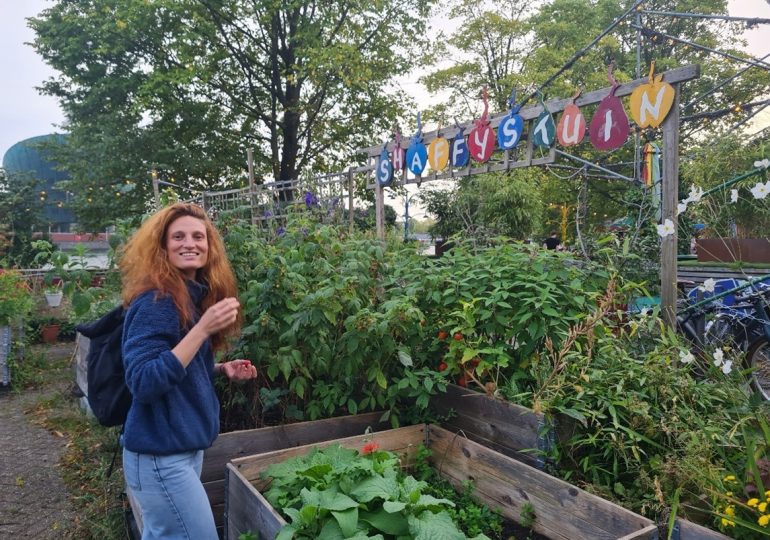In this post Laura Riggi from University of Wageningen (Netherlands) presents her work ‘Strip-cropping legacy enhances potato plant defence responses to aphids via soil-mediated mechanisms’. She talks about the importance of diversity for agriculture, discusses the connections between above- and belowground organisms, and shares how her love for arthropods guided her to made agriculture more sustainable.
About the research
Intensive agriculture focuses on growing a single crop in large monocultures, but this can harm the soil over time and create outbreaks of plant pests. To protect soil health and support better harvests with less need for pesticide application, alternative farming practices may be promising. Strip-cropping is a practice where different crops are grown side by side in strips. Can this method create better soil health and help plants to defend themselves against herbivorous insects?
About the paper
To address this question, we studied potato plants in soils from mono-cropping and strip-cropping fields and investigated their affiliation with “good guys” in the soil and the impact on “bad guys” aboveground.
One of the key players in a healthy soil is a type of beneficial fungus called arbuscular mycorrhizal fungi (AMF). These fungi form partnerships with plant roots, helping them absorb water and nutrients more effectively. This partnership is especially important because AMF can boost crop yields and, under some conditions, enhance plant defense responses against aboveground pests and diseases.
In a greenhouse experiment with potato plants, we compared the effects of soil from strip-cropping systems versus traditional mono-cropping systems (mono-cropping). We wanted to investigate how these soils affected partnerships between roots and AMF, plant growth, and defenses against green peach aphids, a renowned pest insect.
We discovered that potato plants grown in soil from strip-cropping systems had higher levels of AMF colonization in their roots compared to those grown in mono-cropping soil. This suggests that the diverse environment of strip-cropping supports the growth of beneficial fungi. In addition to promoting AMF-plant symbioses, aphid populations remained smaller on plants grown in strip-cropping soil. We observed changes in plant metabolites, particularly those involved in inducible plant defences. These defences are part of a natural plant response to threats like pests. The strip-cropping soil seemed to affect these defences in a way that suppressed aphid populations. Finally, we found that both strip-cropping soil and AMF inoculation indirectly boosted potato yields by increasing the plants’ nitrogen content, an essential nutrient for growth.
Our study highlights the potential of strip-cropping to enhance soil health, reduce pest populations, and increase crop yields through soil-driven processes. While more research is needed to fully understand how strip-cropping achieves these results, this practice shows promise for sustainable farming.
About the author
I am a French-Italian ecologist with a lifelong fascination for arthropods and their intricate behaviors. My interest in this field started in childhood, inspired by science fiction, movies and books. I still remember a story where the main character had developed a machine to communicate with ants and learn about them—a concept that sparked my curiosity and passion for these remarkable creatures. This led me to pursue a Bachelor in Evolutionary Biology at the University of Edinburgh, where inspiring professors and fellow students fueled my fascination even further. Over time, I realized I wanted to address real-world issues, particularly those involving biodiversity and sustainable agriculture. This drew me toward a Masters in Integrated Pest Management (IPM) at Imperial College London, where I focused on promoting ecosystem services provided by arthropods to reduce pest damage and lower chemical inputs in agriculture. This approach has become my guiding principle. In 2013, I began a Ph.D. in Sweden, investigating how agricultural practices impacted arthropod communities and their services, from field to landscape levels and eventually extending my research to pollinators biodiversity. Today, I continue exploring sustainable practices, including collaborations with researchers in the Netherlands to study the impacts of diversification practices like strip cropping on natural ecosystem services provided by arthropods and soil biota.
Like the blog post? Read the research article here.
Leave a comment






